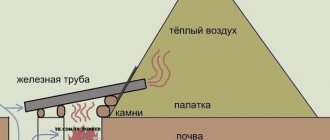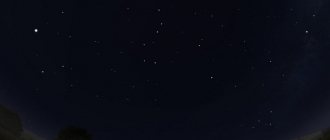Published by Olga on 10/29/201910/29/2019
Land orientation is the main skill for any tourist. Typically, a compass is used to navigate an unfamiliar area. But what to do if this device is not at hand or it suddenly fails? In this case, an ordinary wristwatch with arrows will help you determine your location and set an approximate route.
If you know how to use them correctly, a wristwatch will become a completely complete replacement for a compass. In today's article we will take a detailed look at clock orientation in a variety of situations.
How to navigate by clock
Navigating in the wild with the help of a watch usually involves the use of mechanical instruments with hands. This process is so simple that even children can handle it.
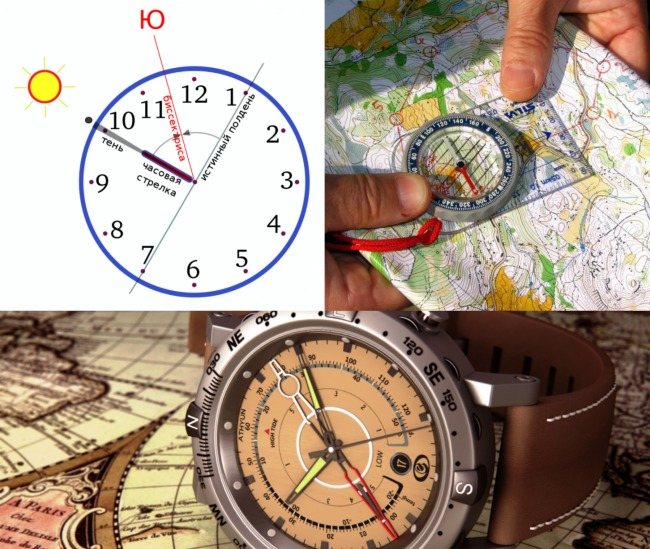
Figure 1. A regular watch will help you find your way in unfamiliar areas
For orientation you need to choose sunny weather. We direct the hour hand directly to the Sun and fix the angle formed between the hand and the number 1. This angle must be divided in half by an imaginary line (Figure 1).
It is this line, which divides the plane in half, that will indicate the direction. South will be in front and north will be behind. At the same time, for orientation it is important to take into account what half of the day the orientation is carried out. If the direction is determined in the first half of the day (before 13-00), then the left corner should be divided, and if after this time, then the right corner.
DETERMINING THE ASPECTS OF LIGHT AND TIME BY SHADOW
On a sunny day, you can determine the cardinal directions quite accurately by the shadow of some linear object, for example, a stick, a pillar, or from yourself. A line connecting the marks of the end of the shadow, made after a short period of time, will approximately indicate the direction of east and west. The other method will require several hours of waiting, but it is more accurate.
Fast way. *Stick the pole into the ground on a flat, vegetation-free area where shadows are clearly visible. The pole does not have to be vertical. Tilting it to get the best shadow (in size and direction) does not affect the accuracy of this method. *Mark the end of the shadow with a small peg, stick, rock, branch, your finger, a depression in the snow, or any other method. The first marker will always point west. Wait until the end of the shadow moves a few centimeters. With a pole length of one meter, you need to wait 10-15 minutes. The more time passes, the more accurate the guide line will be and again mark the end of the shadow. *Draw a straight line from the first mark to the second and extend it approximately 30 cm beyond the second mark. This line will be approximately oriented along an east-west axis. Group “Special Forces Tactics” The higher the stick, the more accurate the determination of the direction. *Stand so that the first mark is to the left of you
s, and the second one is on the right, then you will be looking exactly north.
Identify other cardinal directions. To mark directions on the ground (to guide others), draw a line intersecting the first one in the form of a cross (+) and mark the cardinal directions.
The exact way. Requires several hours of observation. You need to start observing before the sun rises to its zenith. *Install the stick or pole in the same way as in the first case and mark the end of the shadow for the first time. *Stretch a rope between the base of the stick and the first mark and, starting from the mark, draw a semicircle on the ground (clockwise in the Northern Hemisphere and counterclockwise in the Southern Hemisphere). *As the sun rises in the sky and the day approaches midday, the shadow will shrink, moving away from the arc drawn on the ground. The movement will be in an easterly direction. After noon, the sun will begin to set to the west, the shadow will begin to lengthen and,
will finally touch the arc on the ground. At this point, mark the end of the shadow with a second mark. *Now connect the two marks with a straight line. To determine the direction to north, stand in the same way as described above.
Definition of time. *Move the pole to the point where the east-west and north-south lines intersect and place it vertically on the ground. Anywhere on the globe, the western part of the line corresponds to 6.00 o’clock, and the eastern part corresponds to 18.00 o’clock.
*The N-S line now becomes the noon line. The shadow from the pole is like the hour hand on a sundial and with its help you can determine the time. Depending on your location and time of year, the shadow may move either clockwise or counterclockwise, but this does not interfere with telling the time. *A sundial is not a clock in the usual sense. The length of the “hour” varies throughout the year, but it is usually accepted that 6.00 always corresponds to sunrise, and 18.00 to sunset. However, a sundial is quite suitable for telling the time in the absence of a real clock or for setting the clock correctly.
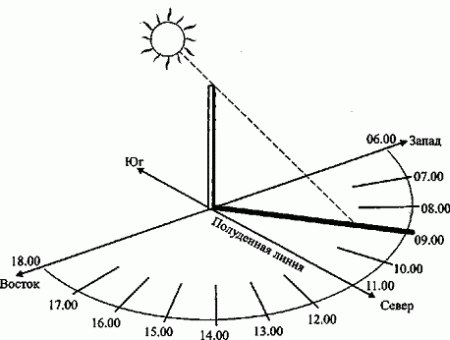
2 624
The basic principle of orientation using a clock with arrows
Despite the apparent simplicity of navigating the clock, this process has its own nuances. To teach a child to navigate correctly, you need to consider in detail the order of this process (Figure 2).
The most important subtlety is to correctly find out noon. If it was installed incorrectly, the determination of all further directions, be it north or south, will also be incorrect.
For the most accurate orientation, you need to know exactly such an indicator as true noon. This is the period of the day when the sun is at its zenith and casts its shortest shadow. It is important to take into account that this indicator will be different for each specific region.
Some inaccuracies may also arise due to a shift to the east or west from the location of true noon. The error in degrees will correspond to the distance in degrees of longitude to the meridian where true noon was determined.
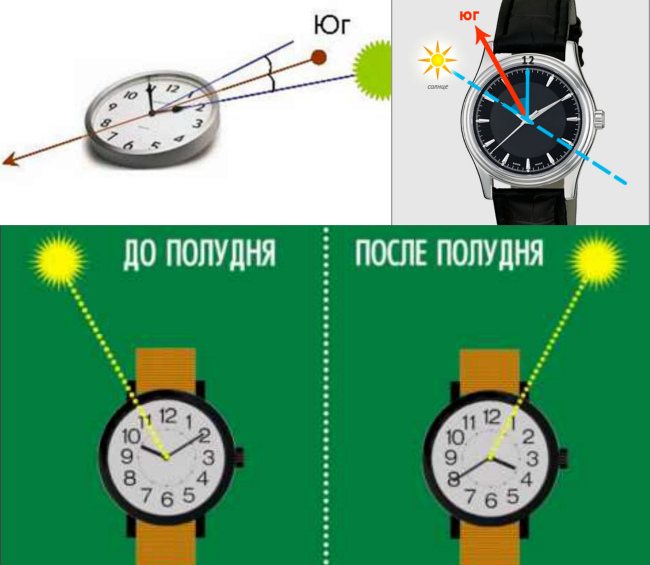
Figure 2. The easiest way to navigate is by a clock with arrows
Errors in measurements also occur if the watch dial was initially tilted incorrectly. If we act according to science, it should be in the plane of the celestial equator. However, in practice, these errors are so insignificant that they do not play a decisive role in orientation.
On March 1, 2011, the Law “On the Police” came into force, which provides that in addition to the name, the structure of the department will also change, and qualitatively. The police will get rid of numerous redundant functions, all law enforcement officers will undergo recertification, and the department itself will become more open.
Rights of a citizen during arrest:
- For a lawyer
- On a phone call
- The police officer must explain to the citizen the reasons for his arrest
The main areas of police activity have been adjusted taking into account modern conditions:
- protection of the individual, society, and state from illegal attacks;
- prevention and suppression of crimes and administrative offenses;
- identification, detection of crimes, investigation in criminal cases;
- search of persons;
- proceedings in cases of administrative offenses;
- execution of administrative penalties.
The police are responsible for:
- Ensuring law and order in public places and road safety;
- Control over the circulation of weapons, private detective and security activities;
- State protection of participants in criminal proceedings.
The department will continue to protect facilities (including on a contractual basis) and carry out expert and forensic activities.
Functions that duplicate the competence of the Federal Migration Service of Russia have been excluded from the list of powers. The rights of the police in conducting inspections of the financial and economic activities of organizations are limited. Requesting data on transactions and accounts of individuals and legal entities is permitted only when tax crimes are identified and suppressed.
Communication between police officers and citizens should be personalized. The law establishes the duty of a police officer, when a citizen approaches him, to state his position, rank and surname. Particular attention is paid to the legal status of employees. Access to the police is closed to convicted persons and persons whose criminal prosecution has been terminated on non-rehabilitative grounds. Upon entering the service, one must undergo a psychophysiological examination, testing for alcohol, drug and other toxic addiction, as well as testing the moral, psychological, business and other qualities necessary for an employee. In the future, each police officer will be periodically checked for knowledge of current legislation.
The federal law came into force on March 1, 2011, with the exception of some provisions for which other dates of entry into force are provided.
Sources used
- info.tatcenter.ru - from police to police. What will change from March 1, except the name?
- www.electrosvyaz.com - police reform - Federal Law “On Police” (since March 1, 2011)
- www.1tv.ru — The Law “On the Police” will come into force on March 1, 2011.
Additionally on Genon.ru:
- What is militia? What is the origin of the word “militia”? (in one answer)
- What is the police? What is the origin of the word "police"? (in one answer)
- What types of administrative liability exist in the legislation of the Russian Federation?
Methods for determining cardinal directions using a watch
Despite the fact that watches are not often used to determine the cardinal directions, there are many ways to navigate the area using a watch.
Below we will look at the most popular and accurate of them, so that in a critical situation you can find your way home even in a completely unfamiliar area.
According to the sun and the clock
Orientation by the sun and clock is considered one of the most accurate and is ideal for those who find themselves in an unfamiliar area without a compass or other means (Figure 3).

Figure 3. The easiest way to use a watch is to determine the cardinal directions in sunny weather.
Orientation to the sun using a wristwatch is carried out in the following sequence:
- Place the dial of the device so that the hour hand points clearly to the Sun. It is very important to ensure that the arrow always points in this direction, otherwise the data obtained will be incorrect.
- Next, you need to calculate the angle formed between the hour hand and the 12 o'clock mark on the dial. Divide the resulting angle in half.
- The line dividing the resulting angle will point south. It is important to take into account the time of day at which measurements are taken. Before noon, the south will be located only on the right side, and after noon - on the left.
This method works very well in practice, but since orientation is carried out using the sun, it can only be used during daylight hours.
Clock with arrows
A regular wristwatch with arrows is the best emergency way to find your way around. But to accurately determine the sides of the horizon, it is extremely important to position the watch dial correctly.

Figure 4. A regular watch can be used as a compass.
In order for an angle divided in half, or rather, its dividing line, to accurately show the direction, you need to do the following:
- The hour hand should be pointed clearly towards the Sun. Only in this case will it be possible to clearly measure the angle between the arrow and the underlying shadow.
- Dividing the resulting angle in half will help determine the south direction. If all measurements have been carried out accurately, getting out of an unfamiliar area will be easy.
- If you have never navigated in this way before, but are planning to travel in the near future, it is better to conduct testing, for example, at the dacha.
The main advantage of this method is that it can be used anywhere and at any time. A compass will not always be at hand, but every traveler has a wristwatch.
Using a watch as a compass
Navigating the terrain using a clock, like using a compass, is quite simple. But, if you don’t have a compass at hand, you can navigate using a regular mechanical watch (Figure 4).
As a rule, this method is used during daylight hours, but with some effort, you can use it at night.
To get directions in the dark, you need to follow these recommendations:
- First of all, you need to wait until the Moon rises, and then you should visually divide the full lunar disk into six equal parts.
- Next, we determine which of them are in sight at the moment.
- Now let's move on to the main orientation steps. If the lunar disk is in the growth phase, you need to subtract divisions, and if the Moon is waning, then add.
All further actions to determine the cardinal directions remain the same, and you should act exactly as when orienting during daylight hours.
Determining cardinal directions by clock in the forest
Orientation in the forest has its own characteristics. The difficulty is that the forest does not provide a full overview of the area. This complicates orientation and route planning in unfamiliar areas (Figure 5).
Orienteering experts usually advise determining the cardinal directions by the location of anthills or moss on trees. But you can also use regular wristwatches for this purpose.
In the forest, clock orientation is carried out in exactly the same way as in open space. The watch dial is positioned so that the hour hand points clearly to the sun. Now we look at the number 12: its shadow in combination with the minute hand should form an angle. It is this line that will indicate the southern direction. Accordingly, the north will be located on the opposite side, and the west and east will be on the right and left sides.

Figure 5. A watch can become an indispensable tool for finding your way in the forest
Detailed instructions on how to navigate the area by watch are given in the video.
Observe the location of the sun
So, first you need to determine the location of the sun. To do this, follow a few simple instructions.
- If you are in the northern hemisphere, stand with your back to the north. If you are in the southern hemisphere, stand with your back to the south.
- When you stand with your back to the north, the east will be on the left, but if you stand with your back to the south, the east will be on the right.

If you don’t have a compass with you, determine the sides of the horizon using well-known signs: anthills like to be located on the southern side of a tree. If you're in the forest, look for moss on a tree trunk. It grows on the north side.
Along the sky and horizon line
If you are going on a hiking trip or just taking a break from modern technology, then you will need to remember your geography lessons. Most often we navigate by the sky, but only if it is not overcast.
If you want to know the approximate time without a clock, you need to choose a place from which the sun will be clearly visible. Afterwards you need to look around. If there are a lot of trees around and they block the view of the sun, you should move to another (freer) place. For a correct assessment, you need to see a clear horizon line. It must be remembered that if the sun is covered by clouds, then the time estimate will not be accurate. Next we will need our hand, or rather the palm. It needs to be aligned with the horizon line. It is necessary to position the little finger so that it coincides with the line. For a more accurate result, you should make an effort to keep your palm in one place. Any hand can be used. But the right one is better, since it is the leading one for most people.
Next, it is recommended to bend the thumb inside the palm. This action is necessary so that during the determination it simply does not interfere. Then the second palm must be placed above the other in a straightened form. And so perform these actions until the upper palm reaches the height of the sun. It should reach its lower edge, but not go beyond it. When you place one palm on top of the other, you need to count the number of fingers. When the upper hand reaches the lower edge of the sun, you need to count how many fingers fit between the sun and the horizon line. It is recommended to take each one in fifteen minutes. The resulting number should be multiplied by the number fifteen.
This is how we find out the exact time. In terms of information content, this method is not entirely accurate, since the fingers have different thicknesses. You can only know the approximate time.
Method No. 1. By key points
This method is based on the understanding that the Sun is approximately in the east at 6 o’clock in the morning, and approximately in the west at 6 o’clock in the evening. Of all the ways to navigate by the Sun, this is perhaps the simplest.
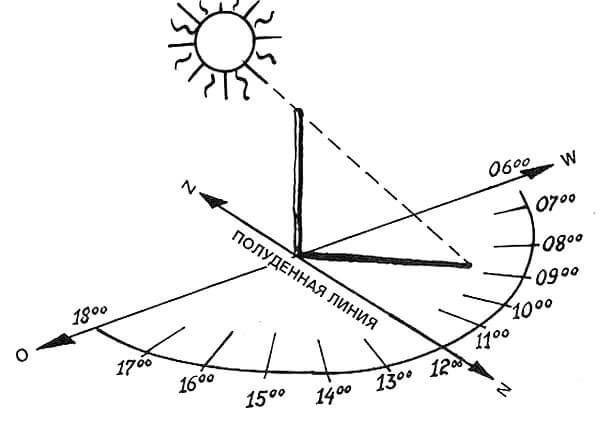
This method also helps solve the inverse problem - using the position of the shadow and known cardinal directions to determine the time.
With 12 noon, everything is a little more complicated: in the middle and high latitudes of the northern hemisphere at noon the Sun will be in the south, in the middle and high latitudes of the southern hemisphere - in the north. In the tropics and on the equator, during the year the Sun at noon may appear either in the north or in the south, and sometimes directly above the observer’s head. We discussed this issue in detail here...
Based on this, you can more or less accurately find out the location of the cardinal points at 6:00, 12:00 and 18:00. To do this, the direction to the Sun is determined, a conclusion is made about the side of the world that corresponds to this direction, and then, knowing one side of the world, all the others are found.
This method allows you to quickly find your way around the area, but its main disadvantage is that it is tied to only three key points - moments in time when the Sun approximately coincides with the main cardinal directions. It is not possible to use it at other times.
Using a compass
How to determine the time of day without a clock? So, our precious time cannot be seen or touched. But it still exists and all events in the world around us flow past us. Time is always in motion. It cannot be turned back, stopped or delayed. At school (starting from primary school) we are taught not only science, but also the knowledge necessary in life. First-graders are taught to spend their time correctly and wisely. Older children should not only understand it, but also be able to navigate without it.
So, for example, how to determine time without a clock in 5th grade? Children should be able to use a compass. The determination process with this device must be performed in clear weather. Place the compass on a flat surface, determine the direction north, set the arrow so that it points north and the number 180 degrees. Place a match on the center of the device. Now look where the shadow falls. If it points to 180 degrees, then it means that it is exactly 12 noon. If it’s 90, then it’s six in the morning. And so on you can deal with such peculiar clocks. It turns out that an hour of time is equal to fifteen degrees on the compass. So, we can easily get the current time.
People often take a compass on hikes for fear of getting lost and confused in time. A compass is essential on such a journey. He helped out in many situations and even helped you survive if you were lost. Therefore, in geography lessons for schoolchildren, this topic is introduced and reinforced with special tests. And every child must know these rules so that in an unforeseen situation he can use the ability to tell time without a clock.
Determine time by stars
Let's determine where in the sky the constellation Ursa Major is located. This can only be done if you are in the northern hemisphere, with a cloudless sky. In summer it is located closer to the horizon.
Now you need to set the approximate time. The two stars of Ursa Major are in line with the North Star. This line will act as an arrow. The North Star will serve as the center of the hypothetical clock. The 6 o'clock mark will be located at the bottom of the watch, and the 12 o'clock mark at the top. The remaining time marks are also completed by imagination. What does the imaginary arrow show when you look north? Let's say 2:30 is an approximate time.
Next, you need to add 1 hour to this figure for each month after March 7th. That is, if the calendar says May 7, you need to add another 2 hours. That makes it 4:30. To clarify the indicator, you need to add or subtract two minutes for each day before or after March 7. If today is February 2, that is exactly 1 month and 5 days until March 7. It follows that you need to subtract 1 hour 10 minutes from the approximate time.
The date March 7 is important when determining time because on this day the sidereal clock shows midnight - exactly 12 o'clock. Therefore, it is easy to adjust the time from this reference date.
Determined by the sun
It has always been interesting to unravel the history of our ancestors and especially how time was determined without clocks before. Approximately this could be done in the sun. It was this principle that formed the basis of the sundial. The arrow was the shadow of the gnomon.
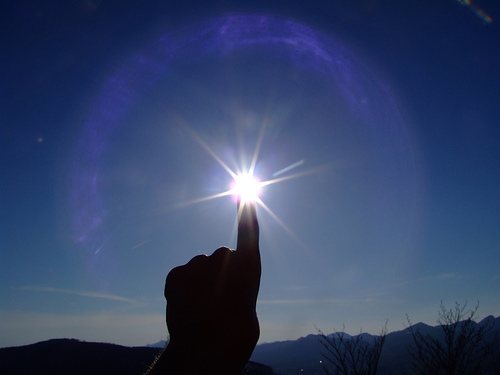
Such watches had many shortcomings and the most important thing was, of course, the incorrect indication of time and its determination only when the sun was shining brightly and there were no clouds in the sky.

